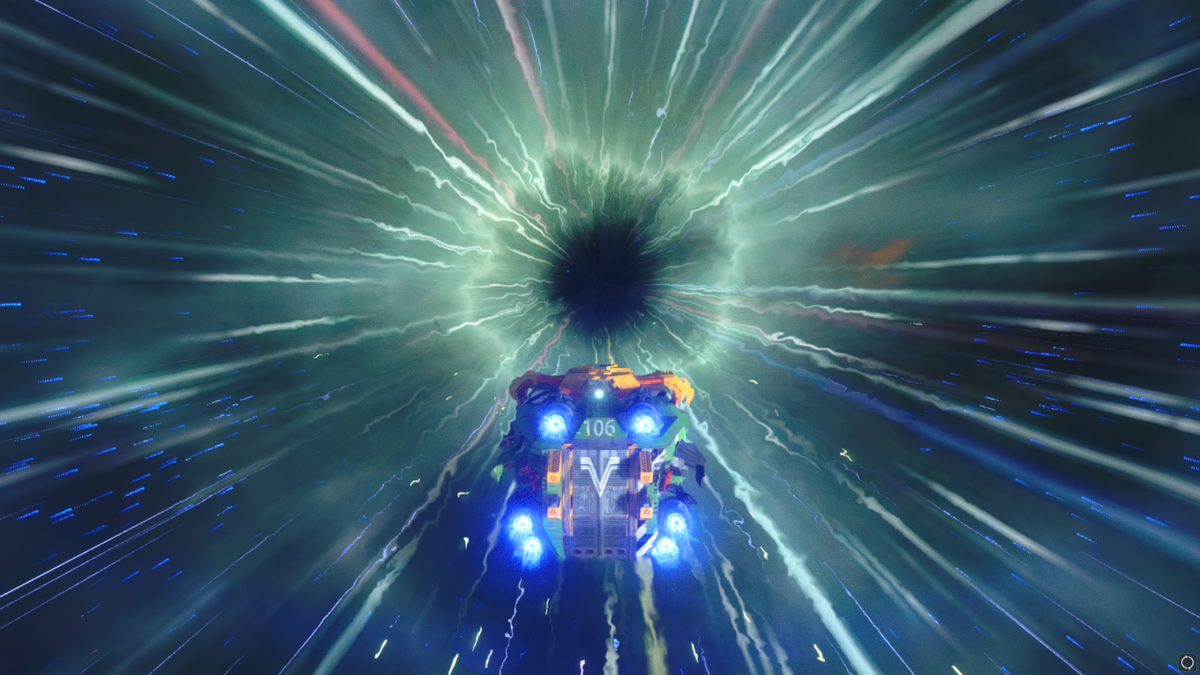
Space sims have somewhat of a reputation for being inaccessible, appealing mostly to those willing to invest in expensive peripherals like flight sticks and put in the time to master the complicated mechanics of spaceflight. There have certainly been more approachable games in the genre, but it’s still largely considered the realm of the enthusiast, which is evident in how few space sims have come out in the last decade. Rebel Galaxy Outlaw takes the process of simplifying the space sim to a new level, and while it does lose some of the appeal that the genre’s slow pace and complexity has traditionally brought to games, it brings its own brand of arcadey fun and opens up the cockpit to a whole new set of players.
Rebel Galaxy Outlaw is a prequel to 2015’s Rebel Galaxy, but it plays entirely differently from that fun, flawed, mostly overlooked game. The original Rebel Galaxy pitted ship against ship on a 2D plane, which made combat feel more like naval warfare, with pilots launching broadsides at one another until one of them sank — or in this case, exploded. Rebel Galaxy Outlaw plays more like what you’d expect from a space sim, with combat taking the form of zero-G dogfights between small, agile ships. You play as Juno Markev, the aunt of the first game’s protagonist, on a mission to track down her husband’s killer and kill him right back. In the animated opening (which takes a page or two out of Cowboy Bebop), Juno gets into a scuffle with her quarry, which ends with him surviving a bullet to the head and her crashing her ship when he turns the tables.
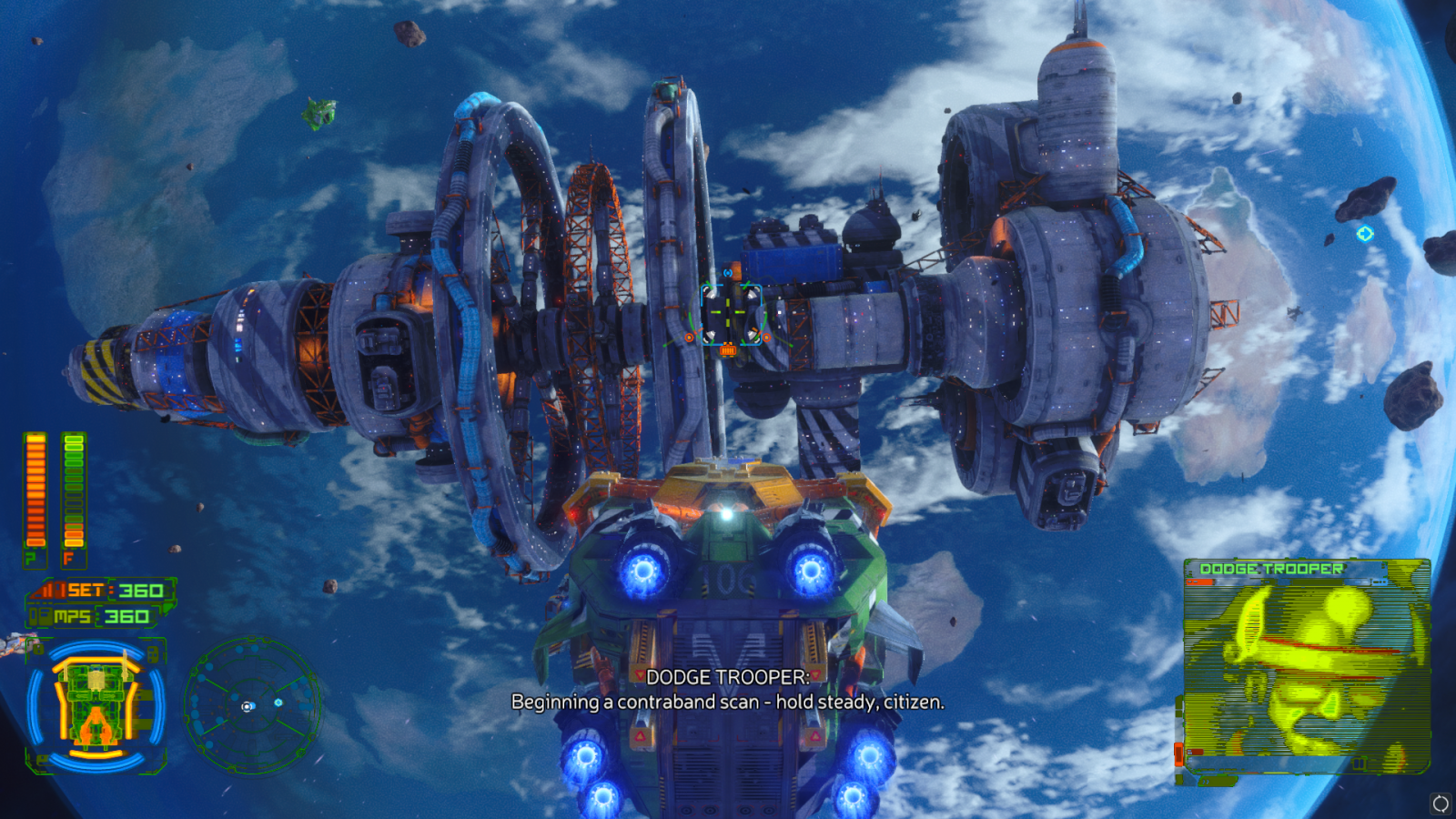
When you take control, your first task is to convince an old friend to give you a ship in exchange for a favor. Juno has somewhat of a checkered past, and you’ll run into a few contacts she has from her smuggling days throughout the game, each offering jobs that fall a bit short of legal. You meet your contact in one of the many bars you’ll spend time in during your playthrough, where you can also get tips from bartenders on where to find valuable cargo, bounties, freighter convoys to attack or protect, and good deals on merchandise if you want to take a more peaceful path. Most space stations you run into will also have markets where you can trade goods and mission boards where you can pick up jobs, plus some with offices of the Merchants Guild or the Mercenaries Guild, which offer better paying but often more difficult work.
Before you get into any of that, though, Juno’s first job will give you a chance to get acquainted with how Rebel Galaxy Outlaw handles spaceflight. In many ways, it will be familiar to anyone who spent time playing games like Freelancer when space sims were more of a presence in the industry, but overall it just feels smoother and easier to grasp.
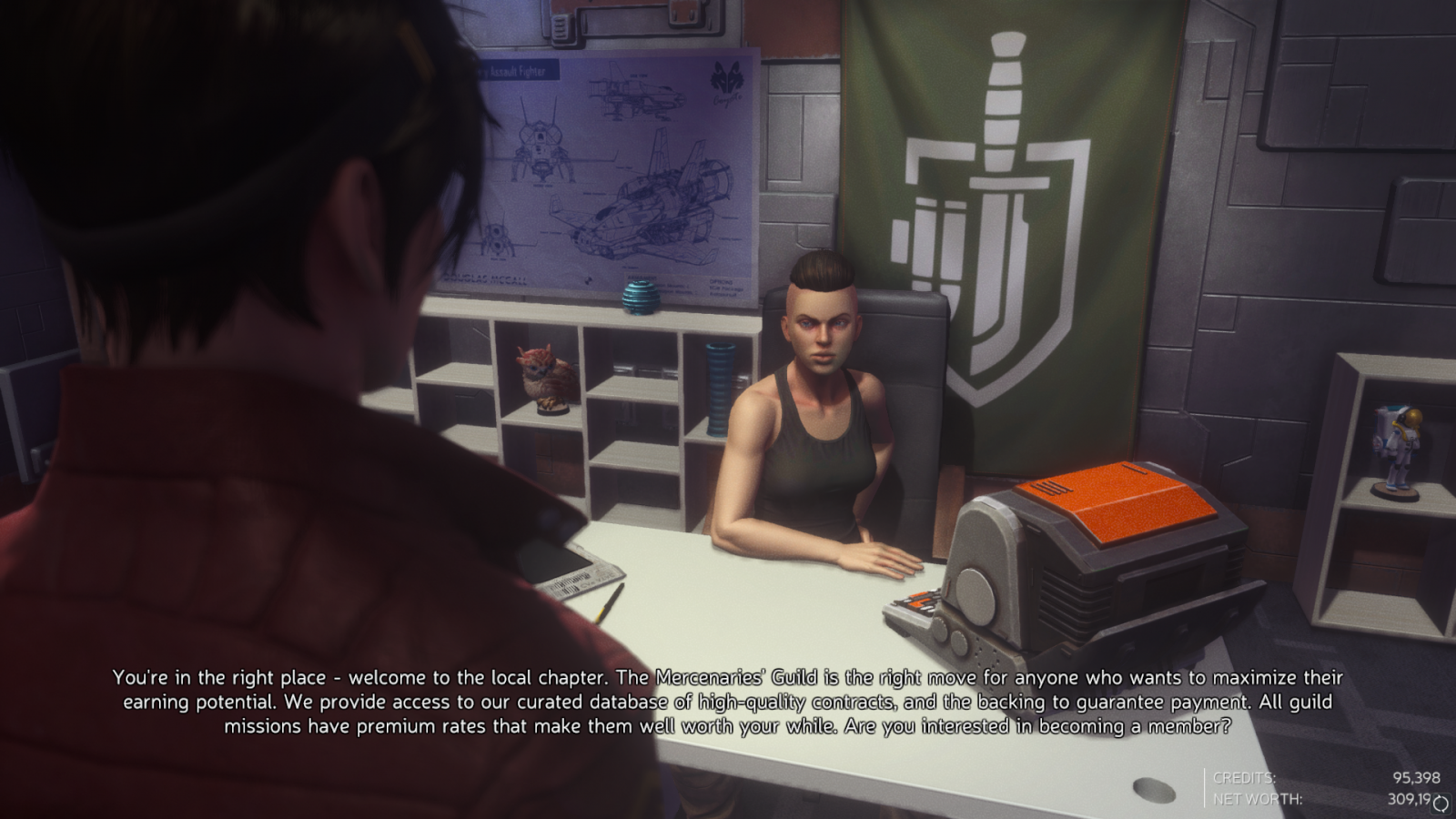
If you play on Normal mode, you’ll have flight and aim assist to make pointing in the right direction and hitting targets feel a bit more frictionless, not to mention a decent bit of gear, including an extremely helpful radar. Targeting is a breeze, and you’re able to select the closest hostile, lock your sensors on a craft, and swap between targets with a simple button combination. You can also send out a scanning pulse to get a better radar picture of what’s going on around you, and pause the action at any time to open a targeting map of the surrounding area, from which you’ll be able to see exactly what kind of a mess you’ve gotten yourself into and manually lock onto any target in the vicinity. This especially comes in handy when you’re hired out to protect freighter convoys, as you can quickly see which ships are in danger.
The biggest innovation that Rebel Galaxy Outlaw brings to controlling your ship is auto-pursuit. By simply holding down a button, you can automatically follow any target, essentially putting your ship on autopilot to track its course and even try to match its speed. It doesn’t do 100% of the work for you, as you’ll still have to make adjustments to actually hit the ship you’re pursuing with your weapons, dodge obstacles between you and your target, or pull off any maneuver more complicated than simply charging headfirst into them. Especially later in the game when battles get tougher and more hectic, auto-pursuit serves as a good failsafe, but doesn’t truly take control out of your hands. It just means that you can spend your time focusing on aiming and managing the minutiae of your ship’s functions rather than chasing an arrow on your radar screen.
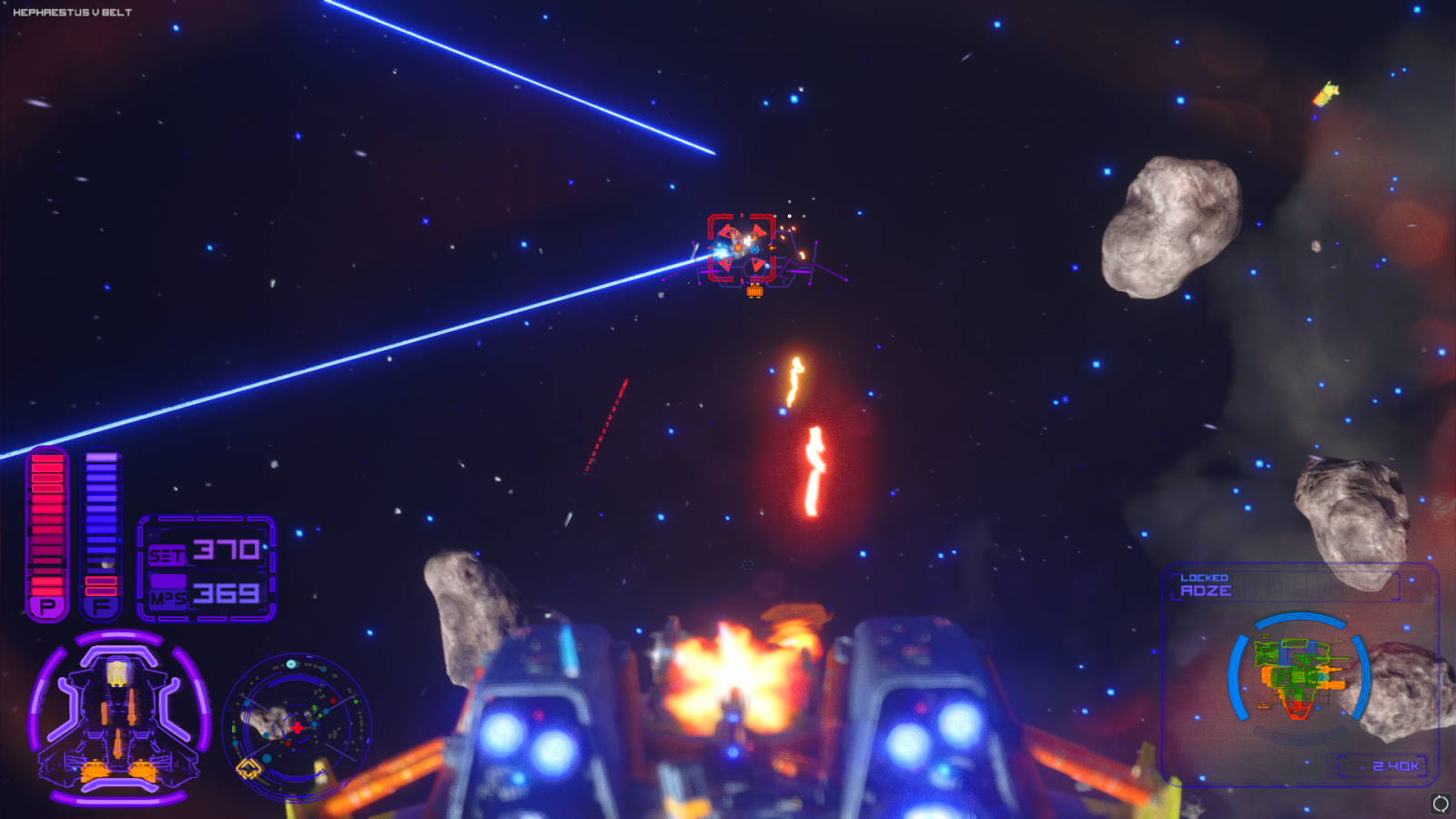
After the first couple of hours, during which I admittedly found the combat pretty dull, I grew to really love this system. Simply holding down one button (or trigger, if you’re using a gamepad as the developers recommend), you can stop thinking about the often frustrating practice of tracking a ship in three dimensions and free up brain space for more interesting calculations. Rebel Galaxy Outlaw gives you impressively granular control over your ship’s functions. At all times, you’ll need to keep an eye on your power levels, as everything from weapons and shields to afterburners and even your radar drain your power supply. Once I got the basics of combat down, most of my time and attention in fights was spent on power management.
Any time you’re in the cockpit, you can open a context menu that overlays your screen and slows down the action. From here, you can do things like change the radio station and open maps, but the most important part is controlling your power supply. You can choose how much juice is flowing from your reactor to your engines, shields, and weapons depending on the scenario. You can also dump all your available power into shields to brace for a big hit, or drain your shields into the reactor and use that power boost to attempt a getaway or a sustained attack when you’ve got an enemy in your sights. That might make it sound like combat is all about tedious menu management, but these are all decisions happening in split-seconds while still deploying anti-ballistic countermeasures, steering your ship through minefields, and strafing pirate battleships — and if flipping a switch on your dashboard and yelling “Divert all power to shields!” to no one but your startled cat while in the midst of a heated space battle isn’t your idea of fun, then I simply don’t understand you. I’ve enjoyed plenty of space sims, and when it comes down to the simple fun of moment-to-moment combat, Rebel Galaxy Outlaw is among the best of them.

There are definitely some areas where it falls a bit short, though. Navigation isn’t nearly as satisfying as it could be, in part because so much of it is automated. Rebel Galaxy Outlaw dispenses with a lot of the tedium of long-haul spaceflight present in many space sims, but in doing so points out how much of that is part of the genre’s appeal. To get from point A to point B, you can simply activate autopilot any time you’re not in combat, which acts as instant fast travel, or enter sublight mode, which is effectively the same, but shows your ship traveling through a sort of subspace highway. The latter mode shows your trip in real-time and can be cancelled before you reach your destination, which helps to sell the massive distances you’re traveling at a bit better, but long-haul spaceflight is not really part of the game here. That makes space feel a little disjointed, more a series of interconnected points of interest than a vast expanse to explore. You’re also pulled out of these travel modes quite often by distress beacons and hostile ships, and you need to manually initiate each jump between waypoints and the jump gates that connect different systems, meaning long-distance travel can turn into long sessions of just repeatedly pointing your ship at a different target and holding down a button to cut to warp speed. If you need to head to an objective more than one system away, or you’re taking on lots of cargo-hauling missions, it can be a real drag.
I was also hoping for a bit more personality from the game. Its space western/blue collar astronaut theme has a lot of promise, but despite that, its characters and story felt pretty flat. There are plenty of interesting interactions between Juno and other pilots, but they’re sprinkled in among long stretches of gameplay that don’t do anything to advance the story, build its characters, or flesh out its world. Most of the heavy lifting on the stylistic front falls to the excellent soundtrack — comprising seven radio stations ranging from classical to Latin to trucker rock — and its art style, which strikes a great balance between realism and cartooniness, making the frequent explosions and laser blasts of combat a treat to watch. The space stations range from floating roulette wheels to asteroids with tin cans stuck to them, which brings some life to the empty reaches of space, and the ships you can buy, though few in number, each have their own unique design. Even the cockpits vary widely, and changing ships will mean readjusting to everything from your view from the front window to the positioning and interface of dashboard elements. What’s more, cargo ships and fighters feel demonstrably different, giving you a real sense that you’re piloting a purpose-built craft rather than just picking the ship with the best stats. I just wish the personality of the game’s design extended more to its narrative.
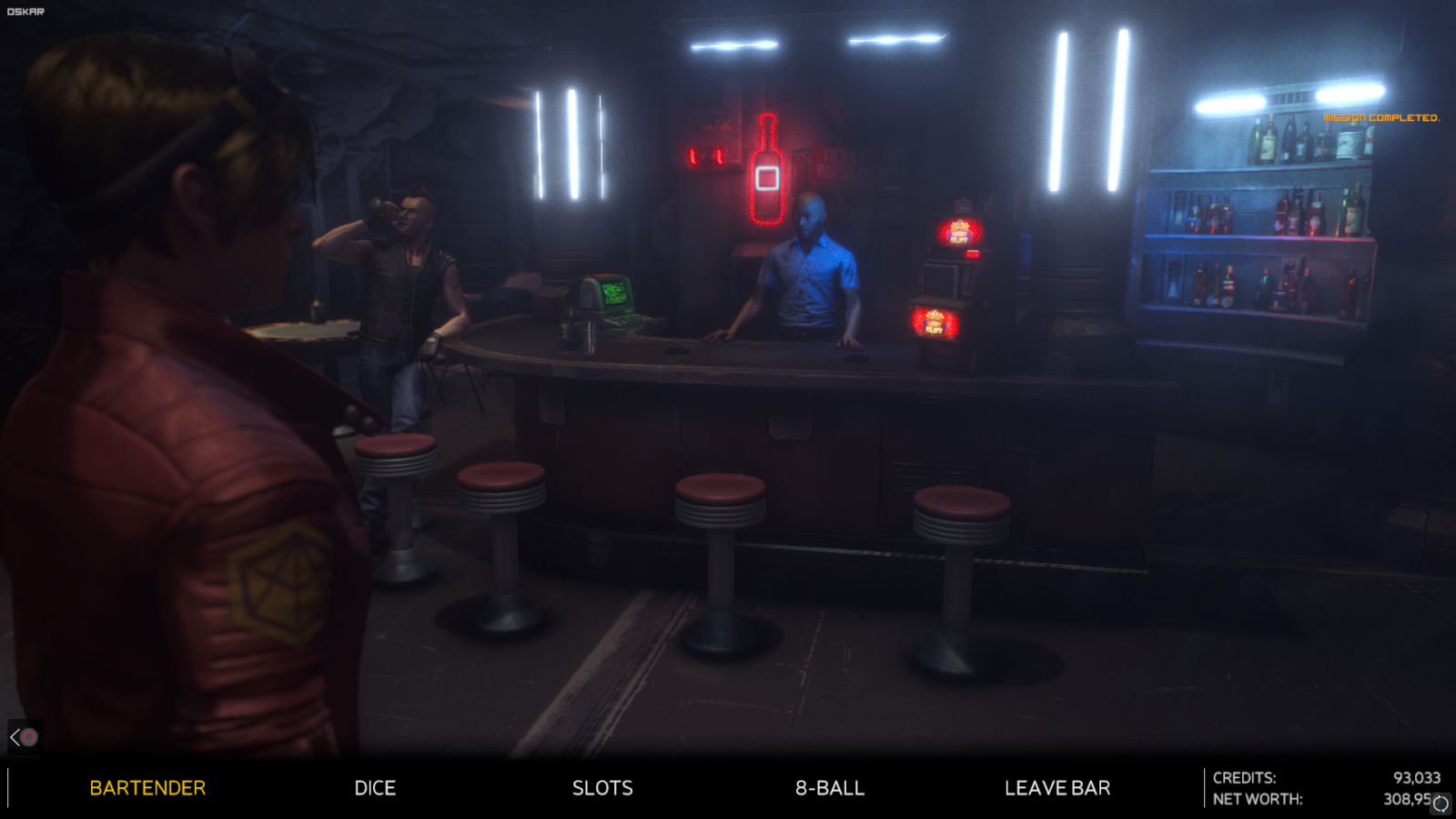
That lack of personality exacerbates another problem I had with the game — repetition. There are a handful of different mission types and good variety in enemies, but you’ll be repeating the same activities over and over again throughout the game, and eventually the feeling of “is this all?” gets hard to avoid. The early game is overloaded with grinding, as you’ll need to upgrade your literal dump truck of a starter ship to a pricey fighter to survive some of the first key story missions, and that means a lot of grinding to earn the requisite space bucks. Then, at some point in the mid-game, you’ll likely have unlocked everything you can really buy with that hard-earned cash, making every encounter that doesn’t push the campaign along start to feel like wasted time. There are additional weapons and ships to unlock through side quests, which often introduce fun wrinkles to keep things fresh, but you really need to dig the core gameplay to enjoy Rebel Galaxy Outlaw for the long term.
Rebel Galaxy Outlaw does what it’s trying to do extremely well, it’s just that what it’s trying to do is fairly limited compared to other space sims. Even its repetitive structure and somewhat lackluster rendition of space would have felt better if it had gotten a little more out-there with its tone and given its characters more time to space. Still, it excels as an action game enough to make any of its faults worth overlooking.
Rebel Galaxy Outlaw
Good
Rebel Galaxy Outlaw brings a smaller scope and simplified controls to a sometimes intimidating genre, watering down the grandeur of spaceflight, but making it more fun and accessible at the same time. Its repetitive missions and sparse narrative weigh it down, but its fantastically engaging dogfights make it an easy recommendation.
Pros
- Welcoming for players new to space sims
- Fun combat that grows more complex and satisfying
- Great music and art style
Cons
- Repetitive gameplay
- Underused characters and shallow story
- Long-distance travel is underwhelming and can be dull
